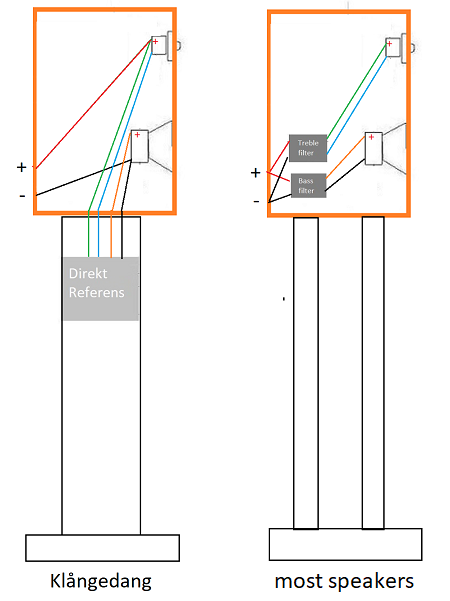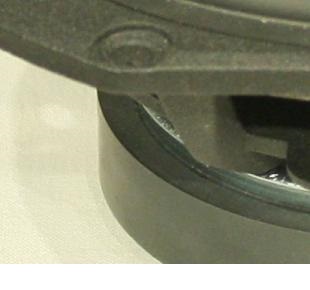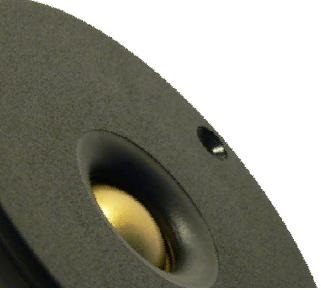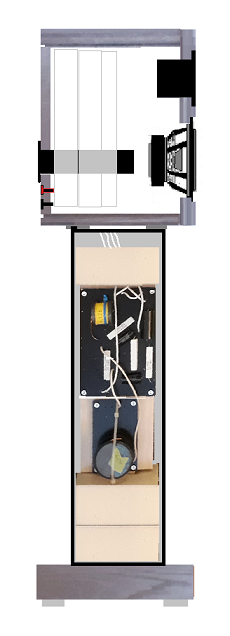About technical

Parallel vs serial X-overs
Most X-overs are parallel - it means the full input signal goes to each section of the x-over, as bass and treble and after that is threated individually. The treble unit is isolated from the bass signal and the Woofer is isolated from the treble signal. Individually is good in some aspects but there can be problem to get the sound synchronous from the different drive units, especially when it comes to transients. Normal parallel filter works perfect with a "perfect resistive load" But the drive unit is NOT!. The drive units, especially the woofer is a motor and a generator/microphone. It "records" a signal from the sound in the cabinet (and in the room) and send it backwards into the X-over. This leads to distortion and loss of information in the X-over. The T1 and M2 models have the principle "direct synchronous serial filter".
The + input is connected to Treble + and the - input is connected to the woofer -. In other words - in serial.
If the impedance of a drive unit changes temporary during a transient or because of acoustic recorded feedback from the cabinet the information will not be lost to
the same degree as in parallel filter - it will instead go to the other drive unit!
The T1 and M2 models have the principle "direct synchronous serial filter".
The + input is connected to Treble + and the - input is connected to the woofer -. In other words - in serial.
If the impedance of a drive unit changes temporary during a transient or because of acoustic recorded feedback from the cabinet the information will not be lost to
the same degree as in parallel filter - it will instead go to the other drive unit!


To put the X-over away from the sounds and vibrations inside the speaker cabinet is a bigger improvement than you could expect. With The X-over in the stand it also makes it possible to connect the amplifier direct to the drive units, and from there back to the X-over.
